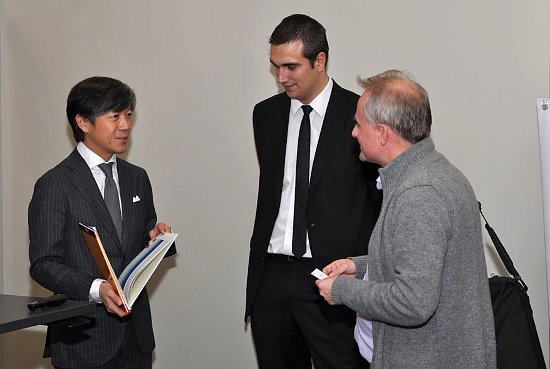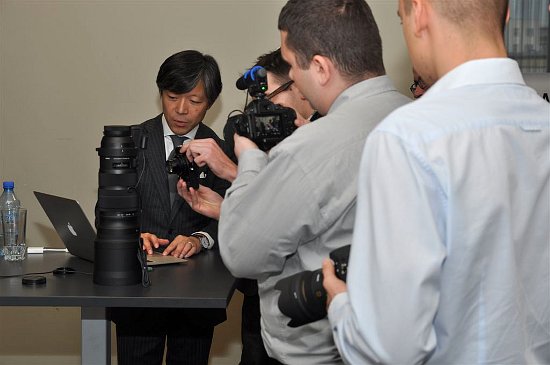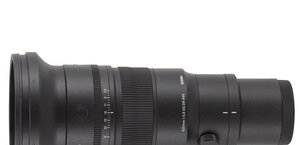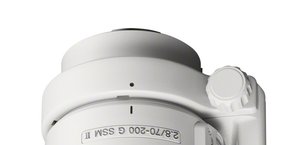Interview with Kazuto Yamaki - CEO of Sigma Corporation
1. Warsaw, November 2012
 |
Kazuto Yamaki - CEO of Sigma Corporation was visiting Poland in the beginning of
November. We had opportunity to meet him and ask several questions.
Arkadiusz Olech: Welcome and thank you for finding the time
for our interview. Firstly I would like to ask you whether it is Your
first visit in Poland?
Kazuto Yamaki: Yes, I'm visiting Poland for the first time. To
tell you the truth I should have come here much earlier; still I'm
enjoying my visit very much.
Please Support UsIf you enjoy our reviews and articles, and you want us to continue our work please, support our website by donating through PayPal. The funds are going to be used for paying our editorial team, renting servers, and equipping our testing studio; only that way we will be able to continue providing you interesting content for free. |
- - - - - - - - - - - - - - - - - - - - - - - - - - - - - - - - - - - - - - - - - - - - - - - -
AO: It is a common knowledge you are the CEO of Sigma and you
have got a lot of duties; despite that fact you managed to visit our
country. Does it mean that the Polish market is important to your
company?
KY: Definitely yes. From our point of view the Polish market is
among the most important ones. Polish customers are very well-informed
and demanding - they really appreciate high quality and they don't
hesitate to let it show. Often they are among those customers who choose
the best products from our line-up. A success on such a market is very
important to Sigma because it means we are doing our job well.
AO: I won't ask you what lenses you are going to show next
year because I know there will be no answer. Perhaps you can at least
reveal how many new instruments you are going to launch?
KY: We have a lot of plans but our processing capacities are
limited. I am yet to discuss a lot of details with my engineers so I
really cannot answer that question right now.
AO: Currently there are only three fixed-focal DC lenses for
reflex cameras with an APS-C sensor (two fisheye instruments and the
1.4/30) on Sigma's offer. Can we expect some new devices in this segment
in the near future?
KY: We don't exclude any possibility of enlarging our offer.
Still we haven't had any precise specifications in that particular
segment. However if those are the expectations of our customers it will
be definitely one of discussion topics with our engineers.
AO: Lately you've launched several fast and relatively
expensive ,,primes", e.g. the 1.4/35, the 1.4/50, the 1.4/85. Is there
any chance we will see their slower and a bit cheaper equivalents as
well e.g. 2/35, 1.8/50 or 1.8/85 models?
KY: Our goal is to offer a very wide choice of lenses in
practically every category; perhaps some of these lenses you've just
mentioned are going to be included in our line-up but currently we are
not sure. We have our priorities and the closest launches will be
connected to those priorities.
AO: Sigma offers as many as five categories of products -
there are Foveon sensor cameras, flashes and three types of lenses: full
frame, for APS-C sensors and for mirrorless systems. Which of these
categories is going to be the most important one in the near future for
Sigma?
KY: To tell you the truth it depends on the interest of our
customers but I admit lenses definitely have always been the most
important category. Our dream is to become an important producer of
digital cameras as well and that's why that category is also very
important. Sigma is the only producer on the market which offers Foveon
sensors and it entails great responsibility to those customers who
appreciate high quality of those detectors and their type of rendering
images. We would like to continue our production in this segment.
AO: As we've already started discussing cameras let me ask
you next two questions concerning this topic. Does the current
technology allows you to produce full frame Foveon sensors?
KY: The Foveon technology doesn't limit the size of a detector in
itself so you can manufacture bigger or smaller sensors.
Technologically speaking there are no obstacles to producing a full
frame Foveon sensor.
AO: Lately the price of the Sigma SD1 Merill has dropped
significantly. Are you satisfied with the current sales volume of that
camera?
KY: To tell you the truth not really. The current sales volume is
not especially satisfying, we expected it to be higher. On the other
hand those people who decided to buy that camera seem to be very
satisfied with its performance. Of course you can remember that the SD1
is a specific camera which can't be used for just any purpose; still it
has its strong points. I am glad there are customers who are able to
find and appreciate them.
AO: What is your favourite Sigma lens?
KY: Currently it is definitely the 1.4/50.
AO: What about the new Sigma 1.4/35?
KY: I would buy that one as well - I really buy and use our
products in private. The 35 mm focal length model could be also one of
my favourite lenses because it is a very all-purpose and interesting
focal length.
AO: I also like the Sigma 1.4/35 very much but, to be honest,
I expected a higher price. The price tag of 3590 PLN surprised me very
nicely.
KY: At such a price point the quality remained high, though. The
great quality of rendered images has always been a priority here. We
wanted to make it possible for the widest group of customers to enjoy it
so we strive to lower financial costs. Lately we've invested a lot in
our production and engineering department, there are no savings here.
However, we try to limit administrative costs for a change. That policy
and the fact that we are indeed a small company make us very flexible
when it comes to our market situation. Still the Sigma 1.4/35 shouldn't
be perceived as a cheap lens. The price is lower not because of the
inferior quality but because we tried to minimize additional and not
always essential expenses.
AO: The 85 mm model is currently the portrait lens with the
longest focal length in the Sigma line-up. Can customers expect that, in
the era of digital full frame becoming more and more popular, there will
be a 135 mm device launched in the near future? What's your opinion?
KY: There have been a lot of requests concerning that type of
lens. It used to be a very popular device; now it is not so popular
anymore. Still there seem to be an increase of interest in it and, as
I've already said, we want to have a full line-up of lenses so
definitely I would like to launch it as soon as possible and include in
our offer.
AO: There are a lot of interesting lenses in the Sigma
line-up which don't feature image stabilization - it's enough to mention
here such models as the 2.8/300 or the 100-300 mm f/4.0. Are we going to
see new versions of these instruments?
KY: I can't reveal details concerning future launches. If there
are enough processing capacities we will be eager to produce them but
still it is a matter of priorities.
AO: Mirrorless devices have become very popular lately,
especially in Japan. What's Your opinion about that market segment?
KY: I think it is a very promising segment. Currently mirrorless
cameras are attracting a great number of customers, especially in Japan,
Korea or Taiwan. The sales volume of these products has been increasing
also elsewhere. It is undoubtedly a result of small dimensions which are
an important feature for most of customers. These cameras can offer a
lot to professional photographers as well - you can mention here a very
accurate focusing system or electronic viewfinders which give you an
immediate control over the exposure parameters or white balance. I
suppose this segment is very promising and it will increase on every
market, even when it comes to more expensive cameras. From our point of
view, however, the fact that the majority of customers buy cameras of
that type only and solely with kit lenses is rather unfavourable.
AO: When it comes to your latest launches I was very
surprised by your introduction of the next version of the Sigma 120-300
mm OS. Its predecessor was launched in 2010. What was the reason of such
a quick substitution?
KY: First of all we are in the middle of reorganization of our
line-up of products as all lenses are going to be sold in new casings.
Sooner or later the Sigma 120-300 mm would have to be remodelled as
well. Its optical construction is so perfect that we currently cannot
noticeably improve it. We decided to leave it unchanged and present it
in a new, better casing with switches that allow you to use new
possibilities of the Sigma Optimalization Pro software as soon as
possible.
AO: The LensRentals claims that the Sigma 120-300 OS,
launched in 2010, is often returned to them with a damaged casing; they
suggested it might be the reason of introducing a new version with a
better casing. Would you like to comment?
KY: There were some problems but they concerned only the very
first lens series delivered to the market. These problems have been
completely eliminated.
AO: You sell lenses with a vide variety of mounts - in fact
with most of mounts available on the market. Can you tell us what mount
type is the most popular one?
KY: Canon and Nikon mounts are the most popular - their levels of
sales are similar.
AO: How does the Sony mount compares here?
KY: Its market share is steadily increasing every year.
AO: Thank you very much for our meeting and the conversation.
I hope that now you will be visiting Poland more and more often.
KY: I really would like to. Thank you.
 |






